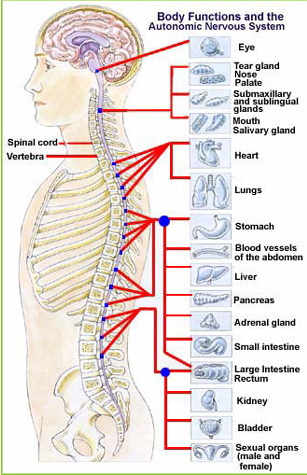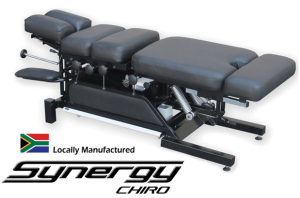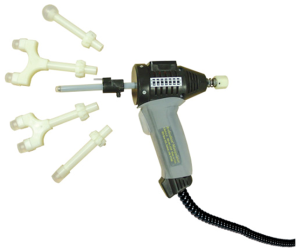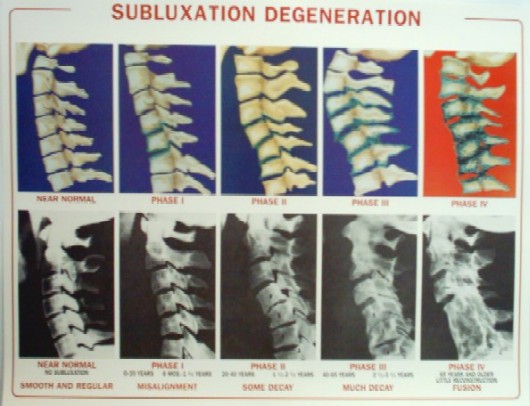Why Chiropractic Care
Below is a vintage video clip of Dr. Reginald R. Gold, or simply “Reggie”, as he was known to millions of chiropractors and chiropractic patients world-wide. He was the greatest chiropractor of the 20th century. It was back in 1973 that I was invited by my chiropractor, Dr. Martin Brown, to attend a public address by Dr. Gold at the Holiday Inn in Spring Valley, NY. There were 250 prospective chiropractic students in attendance and we sat there spellbound for over four hours as Reggie delivered the chiropractic message. Shortly after, I enrolled in Chiropractic College, after completing my prerequisites.
As a tireless chiropractor, Reggie adjusted over 1500 patients per week for 20 years before becoming a chiropractic educator. It is because of Reggie that I became a chiropractor and have been serving my patients and delivering the chiropractic message for over 30 years.
This is the message I would like all of my patients and friends to see and hear.
Dr. Reggie Gold passed away March 24, 2012, at the age of 86 and I am fighting back the tears as I write this. He lived his life like a candle burning brightly to the very end and then, flickering a couple of times before going out, as Reggie described a healthy life.
It is with great admiration that I give you REGGIE!
Your Spine in 3D
Appended is the 3D interactive spine and nervous system: two web links.
Several options for you to click on including, spine and nerves, organs and systems, correct posture, etc.
Click on the vertebra where you have your problem. See where that nerve goes. Remember the spinal nerves carry the brain’s signals to all the organs and systems of the body, thereby controlling function. Chiropractic adjustments remove nerve interference at the spinal level, allowing the impulses to flow back and forth unimpeded, resulting in improved function.
Get the most from your program of chiropractic care by being fully informed.
It isn’t just about the pain; it’s about being maximally healthy.
Learn how chiropractic fits in with your plan for overall health, wellness and longevity.
Call for your next appointment, 890-0265 and remember to tell others about chiropractic!
Dr. Harvey
http://www.onlinechiro.com/3d-interactive-virtual-spine.html
http://www.chiromatrix.com/Chiropractic_Website_Spine_Simulator/nerve_chart/1_Compiled.swf
Autonomic Nervous System
Chiropractic is a system of Complementary Health and Medicine in which wellness is promoted which results in relief of pain through manipulating the body and causing realignment of the spine. Chiropratic works on the basic principle that all systems of the body aim to achieve balance as they are meant to work together and that proper structure of the body will ultimately afford proper function, which is occasionally deterred by stress and injury.
“Chiropractic focuses on the relationship between your spine and nervous system (the brain, spinal cord, and nerves exiting the spine) and how that relationship affects the restoration and preservation of health and well-being.” (New Zealand Chiropractors’ Association)
Dr. Michael Harvey, is a chiropractic practitioner, primarily based in Eden Gardens, but who also has offices in Negril and Mandeville. He is a Palmer College of Chiropractic graduate and practitioner of over three decades of experience.
Methodology
My visits to Dr. Harvey were primarily observation based, but which encompass participant observation as Dr. Harvey is always eager to involve visitors to his office in chiropractic knowledge and understanding. He often educates patients on the benefits of the system and shows them on his displayed charts how the systems of the body are affected when the spine is misaligned.
Results and discussion
Dr. Harvey operates an informal setting in which patients are usually greeted by him and given forms to fill out by him if they are first time patients. He interacts well with patients and often seems to develop a keen knowledge of his patients, getting to know them well and being open enough to allow them to get to know him. His patients are often pleased to establish and maintain this personal relationship which seems to give them a sense of certainty that their well-being is always primary in his consideration.
Patients seen at this center vary greatly in age, sex as well as conditions which affect them. Dr. Harvey sees a number of male and female patients whose age on visits seemed to range from anywhere between mid 20’s to over 60. Some visited as a result of accidents they were involved in, pinched nerves as a consequence of physical activity and restriction of movement due to a variety of illnesses.
The waiting time at the center could range from no time at all to twenty minutes at most. However it is important to note that patients are greeted by Dr. Harvey and the waiting time is established so that new visitors can take the time to fill in the necessary forms. Patients who are regular visits to Dr. Harvey are aware that he sees them in order of appearance with the exception of appointments previously made, but are also aware that treatments usually do not last for more than twenty minutes which the doctor gauges on the severity of the case. However after some time patients also seem to become aware of the natural flow of the office and slate their times as appropriate to lessen the waiting time if necessary.
The patient practitioner experience is unparallel. Dr. Harvey seeks to involve the patient in their care by educating them on their conditions. He also has free and open dialogue with them enabling him to develop a personal knowledge of their lifestyles and conditions so as to determine how various factors may impact on their conditions. He also teaches patients exercises which may assist in their development. Dr. Harvey also keeps in contact with the patients to ensure the progress of their condition. The patients always seem to be pleased to dialogue with Dr. Harvey on a wide range of topics often times unrelated to their conditions and almost always the patients exit the room in the middle of bubbling light-hearted dialogue with a smile on their faces.
Dr. Harvey usually manipulates the spine manually, with the occasional use of a hand held machine which has varied speeds and forces and helps to “free” some areas where manual application is insufficient. This machine however is never used without the patient’s permission and feedback as to how the stimulation affects them whether negatively or positively. Patients who require diagnoses are often referred for x-ray to return to the doctor for evaluation and manipulation.
Dr. Harvey does not sell or dispense any medication or herbal preparations. His practice is run solely on the basis of chiropractic manipulation. However if patients discuss with him other modalities they may be using, he is often alert, open to the discussion and makes notes to form part of the patient history. He discusses several options that patients can use and often can inform patients of where they can go to get additional required services, but he does not make any pronouncement or decisions for the patient. He will however refer his patients to see other chiropractors if necessary, for example if they are moving outside of his reach.
He usually sees patients who are referred to him by other practitioners. He does however also see patients who simply walk in. A fair amount of his patients are also referred to him by other patients. He also makes sure to make patients feel comfortable enough about other modalities employed by other practitioners, for example, while we discussed the potential of reflexology Dr. Harvey shared how reflexology had helped him in the past without giving any direct referral.
To the best of my recollection Dr. Harvey’s credentials are adequately displayed on his walls. It is my belief that Dr. Harvey’s relationship with the Ministry of Health would be established through his relationship with the Ministry of Labour and Social Security, when setting up his practice here in Jamaica.
I have had the opportunity to experience treatment by Dr. Harvey. I found in my experience that he is friendly, humble and keenly interested in his field of knowledge. Our discussions raged from an education on my spinal alignment to personal feelings on several CAM modalities. We’ve talked much about herbal preparations which I use as a sleep aid, the use of reflexology, the possibilities of colloidal silver etc. Dr. Harvey did not suggest that I use or discontinue any system I currently employ, but encouraged me to further my education on the modalities and to always seek discussion and proper diagnoses form a traditional health care provider. The treatments received also assisted with my pinched nerve and resulted also in assistance with sleep and migraine headaches.
I found Dr. Harvey to be well informed and passionate about his field. He could often tell me symptoms I was feeling based on his analysis of my spine. My experience resulted in a general feeling of well being and relief of pain and it was a pleasure to have met Dr. Harvey.
Summary and conclusion
Chiropractic seems to be a growing field in Jamaica. Dr. Harvey could name at least six different practitioners for me, which I could appreciate as he did not seem in any way to be withholding any information. The information garnered gave me a fuller understanding of how chiropractic is applied and assists with everyday health to the extent that Dr. Harvey even has documents posted about driving positions necessary for road conditions in Jamaica. It would seem to me that several persons are becoming keen on their overall health and how this particular modality assists in their wellbeing. To this extent they refer other patients to the practice.
Written by Danielle McNally
Benefits of Chiropractic
Most chiropractic patients come into the chiropractor’s office for the first time seeking relief for back and neck problems. Usually, they have a friend or family member who has had good results with chiropractic. Many of our patients have been on anti-inflammatory medication and pain killers prior to initiating chiropractic care.
On his first visit, a case history is taken to determine the patient’s problem. Then he is placed on the chiropractic adjusting table and after full-spine palpation, he is given a chiropractic adjustment. Spinal palpation determines which of the spinal vertebrae are out of position and whether it has rotated left or right or is tilting left or right. When a vertebra is ‘twisted’ out of position and locks that way, it is called a vertebral subluxation. A subluxation is a misaligned vertebra which is interfering with normal nerve transmission between brain and tissue cell, causing a decrease in function in the tissues supplied by that particular nerve.
That is why a cervical subluxation (neck) can produce numbness and pain or tingling in an upper extremity, or a thoracic subluxation causing a change in acid production in the stomach leading to an ulcer, or a lumbar (low back) subluxation causing cramps, pain and tingling in a lower extremity. One visit to the chiropractor doesn’t correct years of damage to the spine. It takes a series of chiropractic adjustments over several months to effectuate a change in a pattern which has usually taken decades to develop.
Jamaican spines are particularly troublesome. Most new patients present with extremely rigid spines laden with fibrotic scar tissue from years of ligamentous and often osseous (bone) degenerative changes. This condition is so prevalent in Jamaica that I have coined a new “diagnosis” to describe it: Jamaican Spine Syndrome; no ICD-9 code yet!
Having practiced in the first world for the first 17 years of my career, I can attest to the stark differences in presentation of The Jamaican Spine.
A few plausible explanations account for most of these findings: I have discovered that many Jamaicans never slept in cribs as babies, rather sleeping high off the floor on beds designed for adults. During the night and very early in life, these babies have fallen off their beds three feet to a hard floor below, perhaps several times. This is the principle cause of Jamaican Spine Syndrome. Other factors include children being asked to carry heavy loads on their heads at too early an age, predisposing them to early degenerative spinal arthritis. And, of course, the main factor in the perpetuation of these early acquired conditions is the deplorable condition of our nation’s roads. By age forty, most Jamaicans have had their spines pounded by potholes into a pate of ultra-stiff degenerative spinal arthritis. Since these are progressive conditions, the problems compound with time, manifesting more pain, decreased mobility, bone spurring, calcified ligaments, discal diminution and dehydration along with nerve compression in increasing severity, further limiting normal function in the body.
Obviously, those starting chiropractic care earlier in life have a better chance of achieving longer lasting results from a program of regular chiropractic care. That doesn’t mean there is no hope for older Jamaicans. Regular chiropractic care over time results in improved mobility and flexibility along with a feeling of youthfulness and wellbeing. Improved organ and muscle capabilities prove the value of chiropractic to those for whom it is a new approach to health.
Perhaps the greatest benefit of chiropractic care is the documented improvements in overall immune function. After successful results as a chiropractic patient, Dr. Ronald Pero, Sloan-Kettering Memorial Cancer Hospital researcher, conducted a study where dozens of test subjects were categorized into three categories: one with known diagnoses, in other words, people sick with illnesses, a second group consisting of people with healthy lifestyles, people who lived by proper nutrition and exercise but had never had chiropractic care and the third group consisted of patients who had been under regular chiropractic care for five or more years.
Dr. Pero took samples of DNA from each and observed them under an electron microscope, magnification 30,000X. He paid particular attention to the genetic markers representing immune system function of each participant and here is what he discovered.
The “healthy group” which never had chiropractic care had twice as many genetic markers for immunity than the sickly group, but the chiropractic patients in the study manifested 4X the number of genetic immunity markers than the sickly group and twice as many as the so-called healthy group of joggers and fitness devotees.
Chiropractic was founded in September 18, 1895, in Davenport, Iowa, USA, by Dr. Daniel David Palmer, who administered the first chiropractic adjustment to a black man, Harvey Lillard. Lillard had been unable to hear for seventeen years after hearing something “go pop” in his upper back, near the base of his neck. Dr. Palmer discovered a vertebra out of place and nudged it back into position and Harvey Lillard’s hearing was restored and the profession of Chiropractic was born. People with a variety of illnesses came from all over the world to the Palmer Clinic and their successful results were documented in years of research.
Today, there are chiropractic colleges in several countries around the world and chiropractors are now found in most countries on our globe.
For young people seeking a profession to pursue, chiropractic can be a very rewarding career. There are no words which can describe the gratification a doctor of chiropractic feels when he sees function begin to return in his patient. Right now, Jamaica has only five full-time chiropractors to serve more than 2.7 million people. There is a great need for more chiropractic availability in our country which is such a hostile environment to the human spine.
Dr. Michael Harvey
Graduated Palmer College of Chiropractic, December 13, 1980, magna cum laude with high honors.





